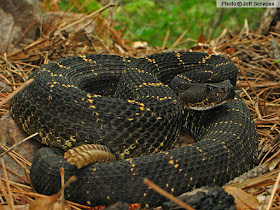Another Thursday, another post for Feminist Folktales! It's a series of traditional stories from around the world that display motifs that reflect feminist values. I am not changing any of the stories, merely researching and compiling them, and posting them here as food for thought. You can find the list of posts here.
I read this story yesterday and I had to share it right away.
Origin: Jewish folktale from a Romanian storyteller
The story
A cruel king has three daughters. He decides to put them to a test: he gives a gem to each, to see what they do with it. The first princess hangs the gem around her neck so she'll never lose it. The second puts it on top of tower so everyone can admire it. The third asks for time to consider, because she is not sure what she wants to do. While musing, she wanders into a cottage where a mother of seven children is dying from illness. The princess sells the gem and buys food, medicine, clothes, etc. to help the family get back on their feet. When the king hears this, he exiles his daughter for wasting the gem.
While traveling, the princess meets a dwarf and helps him carry rocks. In exchange the dwarf gives her a small pendant. If she drops a tear into the pendant, it turns into a diamond. The princess travels the kingdom, and whenever she feels sorry for someone, she turns her tears into diamonds, and helps people in need.
Meanwhile the neighboring king attacks the realm. The king calls people to war, but they hate him, so they desert instead. When the princess appears, however, they love her for her kindness and help, and they rally around her. The princess starts negotiations. The two kingdoms reach peace, and the princess marries the neighboring king's son. They end up ruling both countries with wisdom and kindness, and they live happily ever after.
What makes it a feminist story?
 |
Visit to the child at nurse
George Morland, 1788. |
When we talk about feminist folktales and "strong female characters", we often tend to think of warrior women, rebellious girls, Amazons, dragon slayers, ladies disguised as knights, Artemis-like huntresses. Think Disney's
Brave. There is obviously a reason we think of these first. But sometimes, as a storyteller, I think about whether we are putting too much emphasis on female characters who are physically strong, or carry masculine traits, engaging in violent activities (war, hunting). Because I think
gentleness, empathy, and kindness can also be a strength in any gender. In fact, I think
it is a radical act to be caring and gentle when it is seen as a "weakness", "soft", or "feminine" (see the percentage of men and women in helping professions).
This is exactly what happens in this story. The two elder daughters hide or display their riches, but they don't use them; only the considerate youngest princess puts the gem to use, by selling it and helping someone else. Her father punishes her for "wasting" the gem on someone who doesn't deserve it, showing that he really is an awful king, not caring for the poor of his country at all.
(I especially like the fact that the princess asks for time to consider her options. A lot of young people nowadays are not prepared to make file decisions at the drop of the hat - school, career, relationships, etc. - and it is important to let them know it is okay not to, even though the social pressure is great.
You are not lesser than anyone for not finding your path right away.)
I love the symbolism of the tears turning into diamonds. When the princess see someone suffering, she sheds tears, and then helps. To me, the tears symbolize empathy, and also the will to help. Crying in itself would be useless. It has to turn into something tangible to make a difference.
Empathy is wildly underrated, and probably the most important human trait - maybe the only one that can change things for the better. It should be fostered, taught, developed, and celebrated. The princess saves her entire kingdom by being kind to people. One by one, on a small scale. Yes, she "coddles" them, and
yes, she gives them "stuff for free" when they are in need. In exchange, the kingdom becomes a community, stronger and healthier than it was under the cruel king. Kindness has more power than fear.
You don't need a sword to be a feminist hero.
Things to consider
I have been thinking about what would happen if instead of raising an army the princess would go straight to negotiations, placing diplomacy over war. It might not work with the story's symbolism, but it's worth musing about.
Sources
This story was recorded from a Jewish lady named Sima Goldenberg, who was born in Romania from parents of Romanian and Turkish backgrounds, and moved to Israel in the 1960s.
Haya Bar-Itzhak & Idit Pintel-Ginsberg:
The power of a tale: Stories from the Israel Folktale Archives (Wayne State University Press, 2019.)
Notes
The text doesn't really say what kind of gems the king gives his daughters. I imagined them as rubies.








































